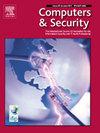Enhancing detection rates in intrusion detection systems using fuzzy integration and computational intelligence
IF 5.4
2区 计算机科学
Q1 COMPUTER SCIENCE, INFORMATION SYSTEMS
引用次数: 0
Abstract
Intrusion Detection Systems (IDS) show a major part in computer cyber defense by detecting and reacting to unauthorized activities. These systems monitor network and system activity, evaluating developments to identify possible security breaches. Enhancing Detection Rates in IDS includes optimizing algorithms, employing Machine Learning (ML) approaches, and employing intrusion detection to enhance the system's functionality to find novel vulnerabilities immediately. Continuous improvement in detection capabilities is essential for adapting to evolving challenges from cyberspace and maintaining resilience of the online infrastructure. To enhance the detection rates, data preprocessing like min-max normalization, followed by t-distributed Stochastic Neighbor Embedding (t-SNE) feature extraction technique to capture most discriminative attributes for attack classifications. The established Genetic Fuzzy Systems (GFS) throughout paired learning framework for detecting input attack. The model enhances accuracy for unusual attack occurrences by better distinguishing between normal activity and distinct attack categories. To proposed Generative Adversarial Network (GAN) as a classifier for enhancing detection rates. This research explores the performance of the proposed GFS-GAN model on two prominent intrusion detection datasets are the TII-SSRC-23 for dataset 1 and NSL-KDD for dataset 2. The suggested GFS-GAN model demonstrated exceptional performance on the TII-SSRC-23 dataset, achieving 99.23 % accuracy. The GFS-GAN model also performed well on the NSL-KDD dataset, with an accuracy of 99.13 %, The findings illustrate GANs' capabilities to progress the efficacy and durability of IDS, resulting in effective protection against complicated cyber-attacks.
利用模糊集成和计算智能提高入侵检测系统的检出率
入侵检测系统(IDS)通过检测和响应未经授权的活动,在计算机网络防御中发挥了重要作用。这些系统监视网络和系统活动,评估发展以识别可能的安全漏洞。提高IDS的检测率包括优化算法,采用机器学习(ML)方法,以及采用入侵检测来增强系统的功能,以立即发现新的漏洞。不断提高检测能力对于适应网络空间不断变化的挑战和保持在线基础设施的弹性至关重要。为了提高检测率,采用最小-最大归一化等数据预处理技术,然后采用t分布随机邻居嵌入(t-SNE)特征提取技术捕获最具判别性的属性进行攻击分类。建立了遗传模糊系统(GFS)整个配对学习框架,用于检测输入攻击。该模型通过更好地区分正常活动和不同的攻击类别,提高了异常攻击发生的准确性。为了提高检出率,提出了生成对抗网络(GAN)作为分类器。本研究探讨了所提出的GFS-GAN模型在两个主要入侵检测数据集上的性能,即数据集1的TII-SSRC-23和数据集2的NSL-KDD。建议的GFS-GAN模型在ti - ssrc -23数据集上表现出优异的性能,达到99.23%的准确率。GFS-GAN模型在NSL-KDD数据集上也表现良好,准确率为99.13%。研究结果表明,gan能够提高IDS的有效性和持久性,从而有效抵御复杂的网络攻击。
本文章由计算机程序翻译,如有差异,请以英文原文为准。
求助全文
约1分钟内获得全文
求助全文
来源期刊

Computers & Security
工程技术-计算机:信息系统
CiteScore
12.40
自引率
7.10%
发文量
365
审稿时长
10.7 months
期刊介绍:
Computers & Security is the most respected technical journal in the IT security field. With its high-profile editorial board and informative regular features and columns, the journal is essential reading for IT security professionals around the world.
Computers & Security provides you with a unique blend of leading edge research and sound practical management advice. It is aimed at the professional involved with computer security, audit, control and data integrity in all sectors - industry, commerce and academia. Recognized worldwide as THE primary source of reference for applied research and technical expertise it is your first step to fully secure systems.
 求助内容:
求助内容: 应助结果提醒方式:
应助结果提醒方式:


